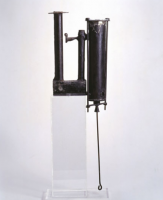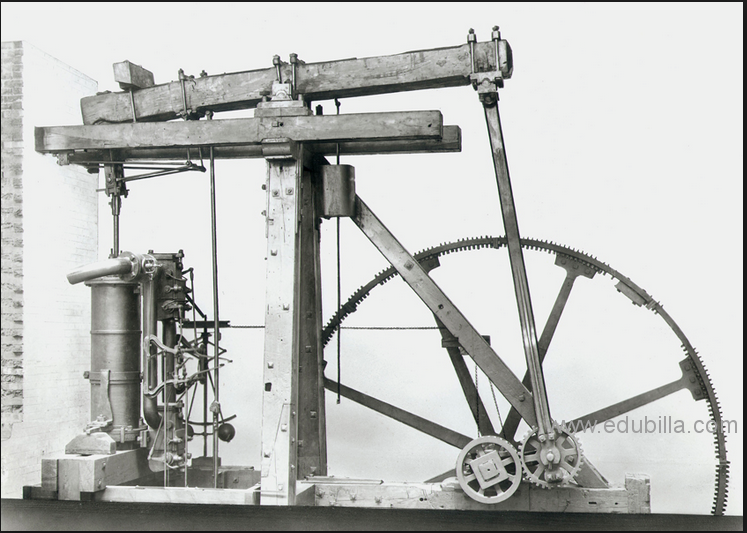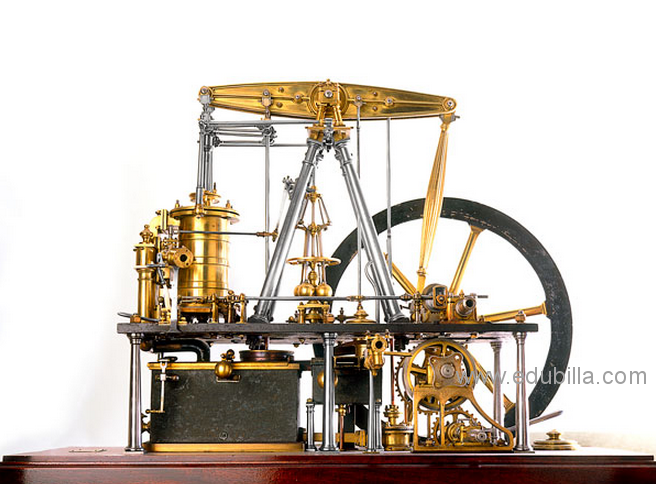








The Watt steam engine (alternatively known as the Boulton and Watt steam engine) was the first type of steam engine to make use of steam at a pressure just above atmospheric to drive the piston helped by a partial vacuum. Improving on the design of the 1712 Newcomen engine, the Watt steam engine, developed sporadically from 1763 to 1775, was the next great step in the development of the steam engine.
Watt's two most important improvements were the separate condenser and rotary motion.The separate condenser, located external to the cylinder, condensed steam without cooling the piston and cylinder walls as did the internal spray in Newcomen's engine, more than doubling Watt's engine's efficiency.Rotary motion was more suitable for industrial power than the oscillating beam of Newcomen's engine.
James Watt's design became synonymous with steam engines, due in no small part to his business partner, Matthew Boulton.
A Scottish instrument maker, James Watt, was assigned the job in 1763 of repairing a model Newcomen engine for the University of Glasgow, and noted how inefficient it was.
In 1765 Watt conceived the idea of a separate condensation chamber. Watt's idea was to equip the engine with a second, small cylinder, connected to the main one. In Watt's design, the cold water was injected only into the condensation chamber. This type of condenser is known as a jet condenser. Because the chambers were connected, this caused condensation without significant loss of heat. The condenser remained cold and under less atmospheric pressure than the cylinder, while the cylinder remained hot. When the piston, propelled by steam, reached the top of the cylinder, the steam inlet valve closed and the valve controlling the passage to the condenser opened. External atmospheric pressure pushed the piston towards the condenser.
A further improvement to the system of condensation was to dispense with the jet of cold water, and cool the condenser by immersing it in a cold water tank. This type of condenser is known as a surface condenser.
At each stroke the warm condensate was drawn off and sent up to a hot well by a vacuum pump which also helped to evacuate the steam from under the power cylinder. The still-warm condensate was recycled as feedwater for the boiler.
Watt's next improvement to the Newcomen design was to increase the power of the engine by sealing the top of the cylinder and injecting low-pressure steam into the upper part of the cylinder, instead of relying on atmospheric pressure. The power of the low-pressure steam would assist the vacuum created by the condensation, increasing the power of the down stroke, and the speed of the engine.
These improvements led to the fully developed version of 1776 that actually went into production.

